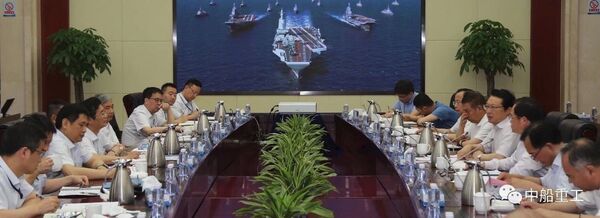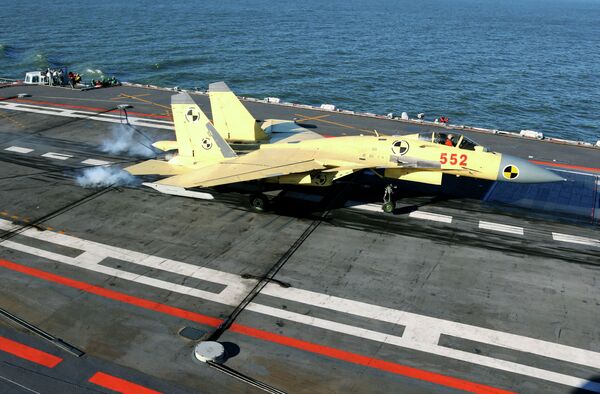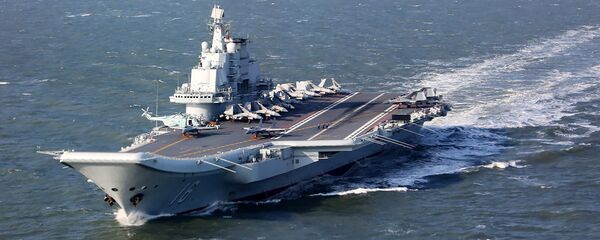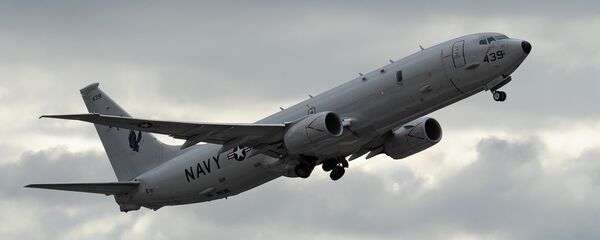Last month, The Diplomat reported that China could have as many as seven operational aircraft carrying ships by 2025, including four carriers and three smaller aircraft carrying vessels. The estimate followed rumors that a Chinese company's request for a bid on a nuclear-powered icebreaker may in fact be the first step toward the creation of a nuclear-powered carrier. That news followed the leak of an image that appeared to show a carrier design with three catapult launchers, prompting speculation that China is well underway to developing electromagnetic launch catapult technologies as well.
Interest in the Chinese Navy's carrier plans spiked after the 2012 deployment of the Liaoning, a Soviet heavy aircraft-carrying cruiser design purchased and revamped by China and even more so with the launch of the Type 001A, China's first domestically-built carrier, earlier this year.
Training Wheels Come Off
Matthew Funaiole, a fellow with the China Power Project at the Washington, DC-based Center for Strategic & International Studies, says that whereas China's first two carriers were really aimed at helping the Chinese Navy get its bearings in the use of aircraft carriers, the Type 002 is the ship naval observers should really watch out for.
"The new one, the Type 002, is something that might be a little more interesting, a little more compelling," Funaiole told Business Insider.
"If the third carrier … does have some catapult-assisted launch system, that will be a huge step forward for China. They would very quickly have moved closer to what current technology is. That's something that very few countries can do. That would put China in a very elite status," the analyst stressed.
Replacing the ski jump-assisted launch systems used on China's current first generation carriers with an electromagnetic catapult system will enable planes to carry more fuel and ammunition, thus increasing the range and power of the carrier strike group.

"That's going to be the biggest challenge for China. Trying to figure out how to get a nuclear-powered reactor on the ship," he argued. Without nuclear propulsion, China's carriers will remain less efficient, slower, and have a shorter service life than their US counterparts.
Existing Carriers 'Pretty Good' for What They Are
Even the Liaoning is "pretty good at its job," according to Funaiole, given that it effectively serves as a sort of training vessel "to sort out carrier operations, figure out how to integrate [a carrier] into the fleet, and determine what kind of supporting vessels [China] need[s] to put with the carrier for their mission."
This is important, Funaiole noted, given that the Chinese are "very new to carrier operations" and "have never operated carriers in any high-intensity situations."
At the current stage, the researcher suggested that it's "a little bit unfair" to compare China's carriers with US capabilities "because the US has been doing this for 90 years and the Chinese are just now getting into the carrier game."

With that in mind, China's first two carriers, the Liaoning and the Type 001A, are not competitors to the US so much as a sign that China is "practicing how to build and operate carriers." According to Funaiole, it is totally realistic to expect China to build between four and six carriers over the next decade, with areas of deployment including the South China Sea and perhaps even the Indian Ocean.
However, given that China's naval ambitions are generally limited to defending coastal areas, including the disputed South China Sea area, even that may be enough. In Southeast Asia, "no country is going to have the capacity to even match China [technologically] in any way," Funaiole concluded.




